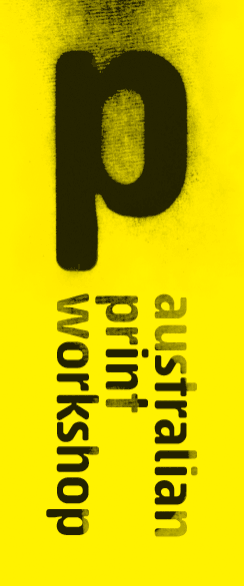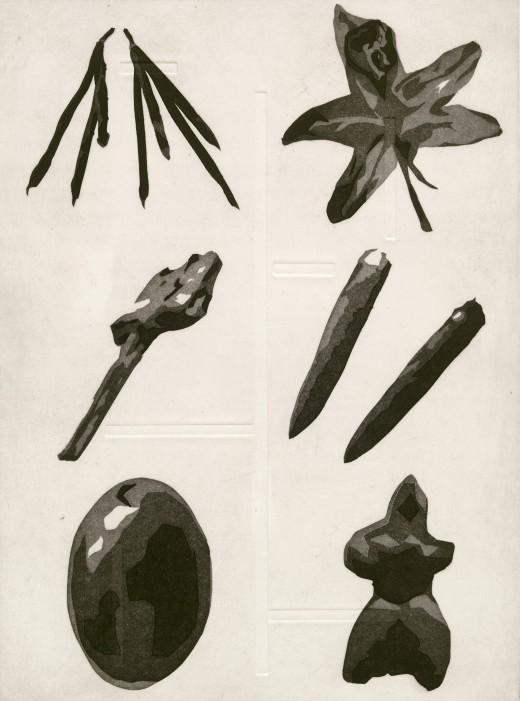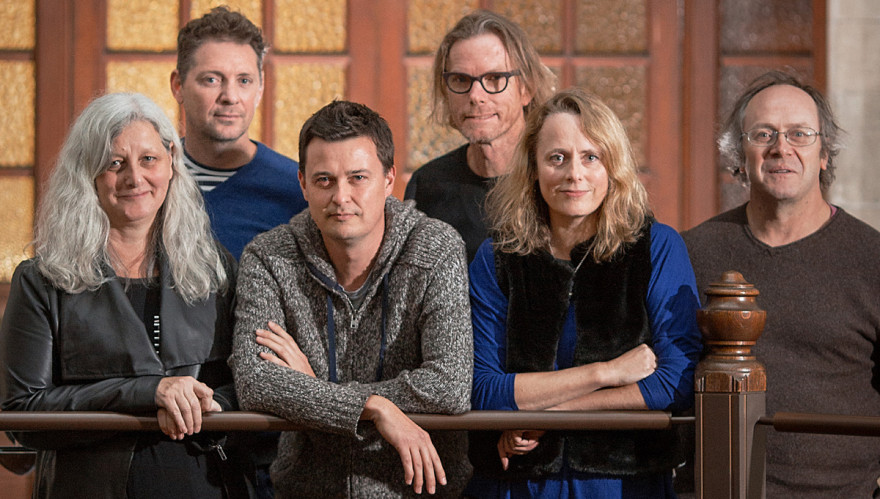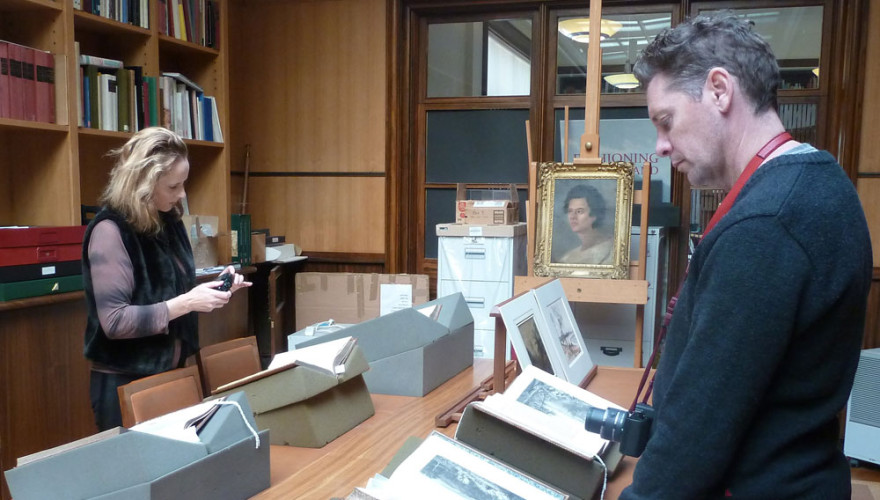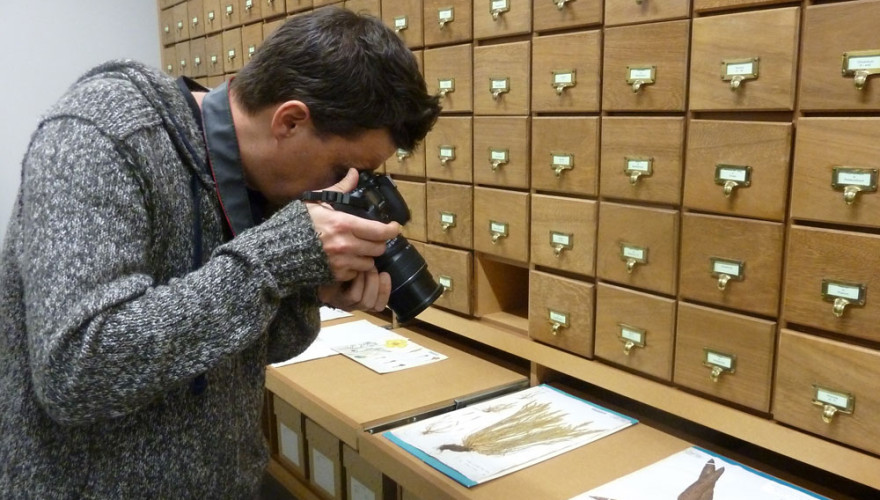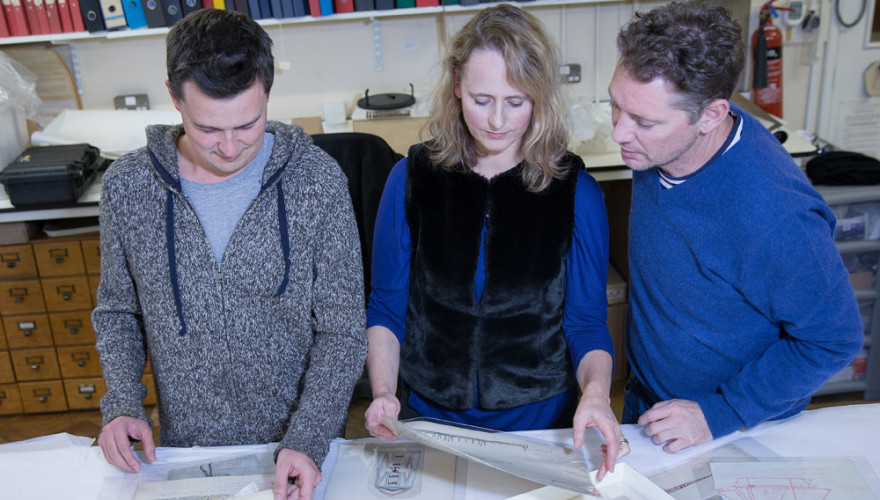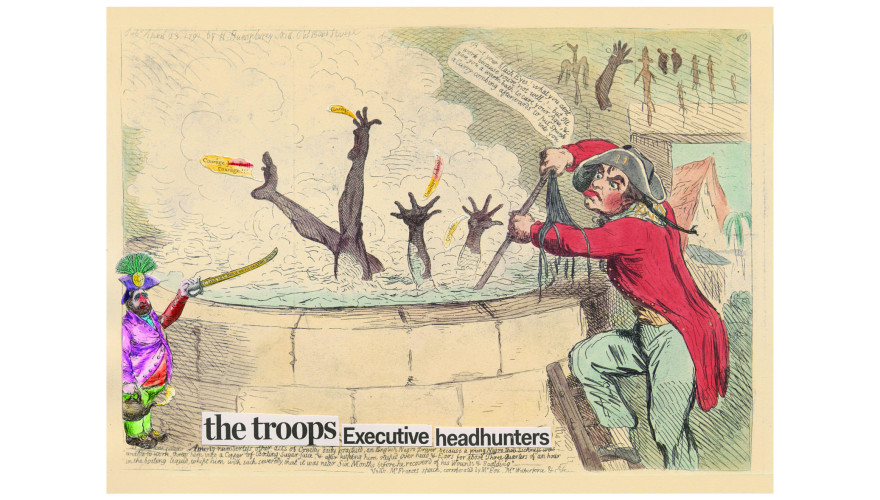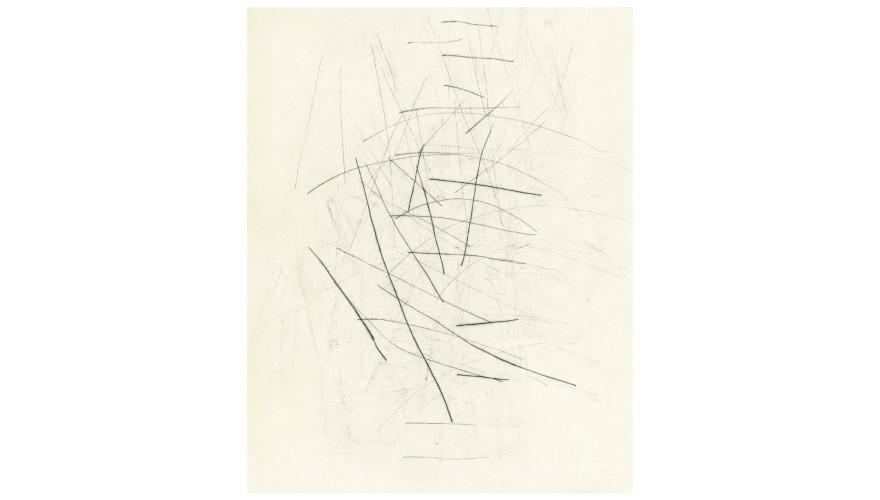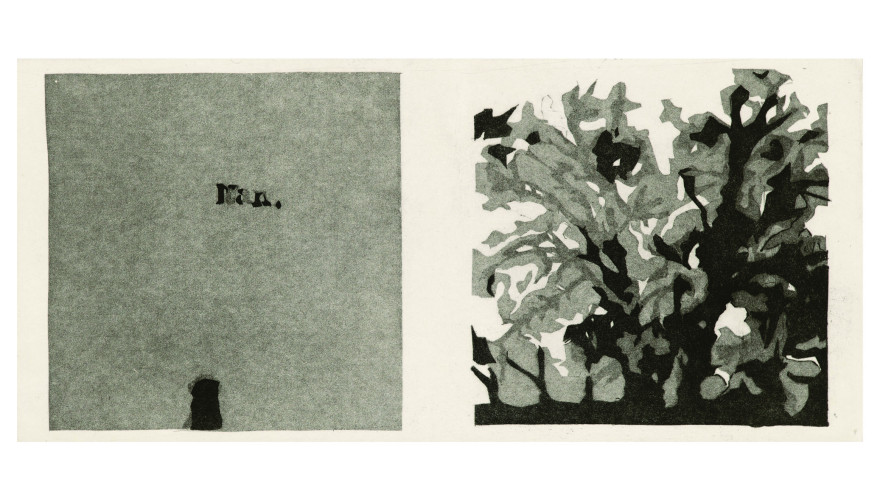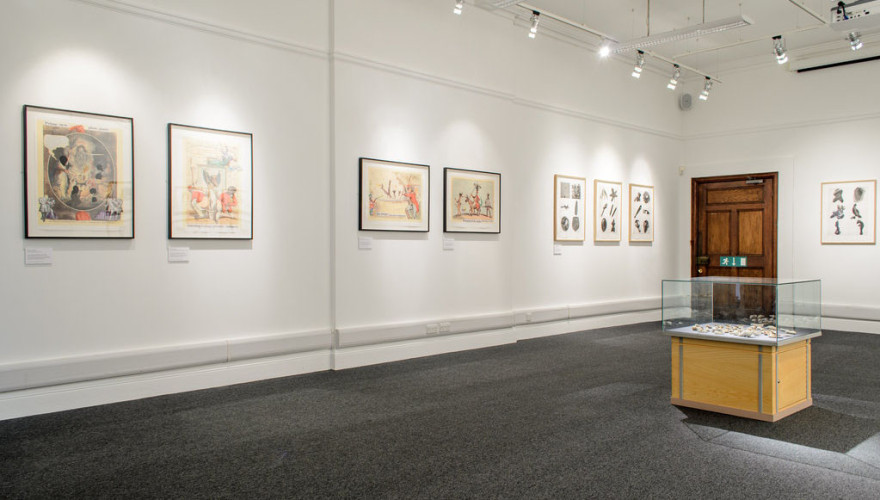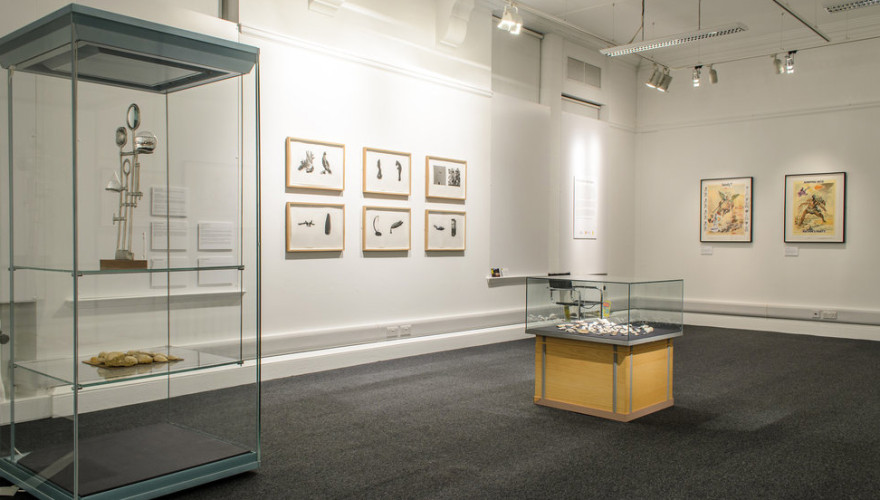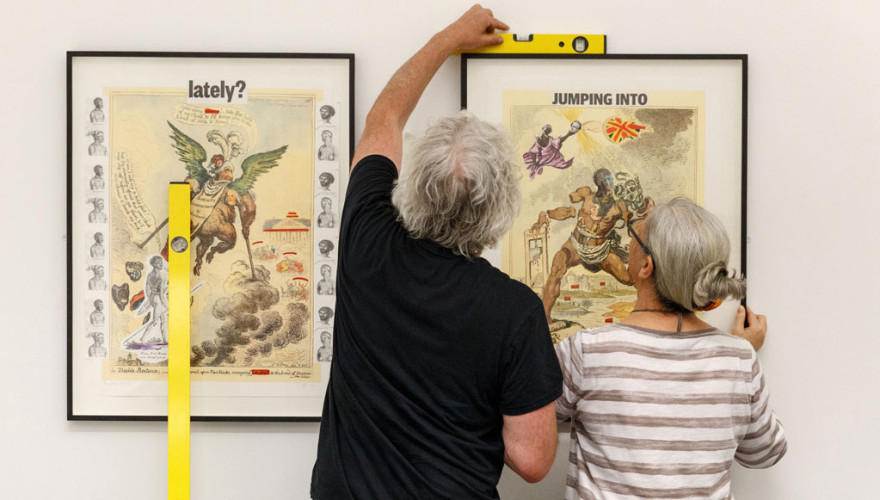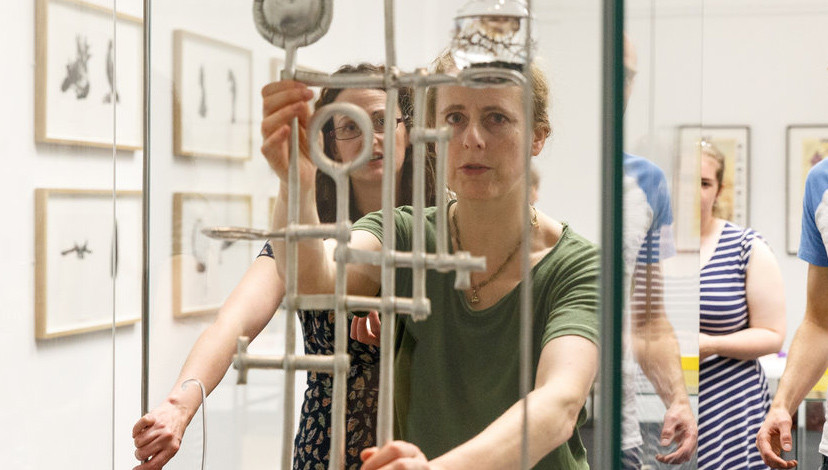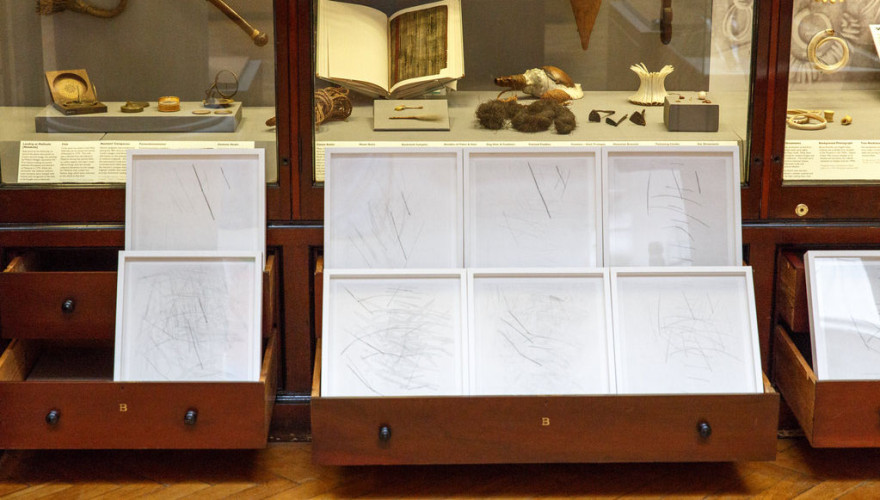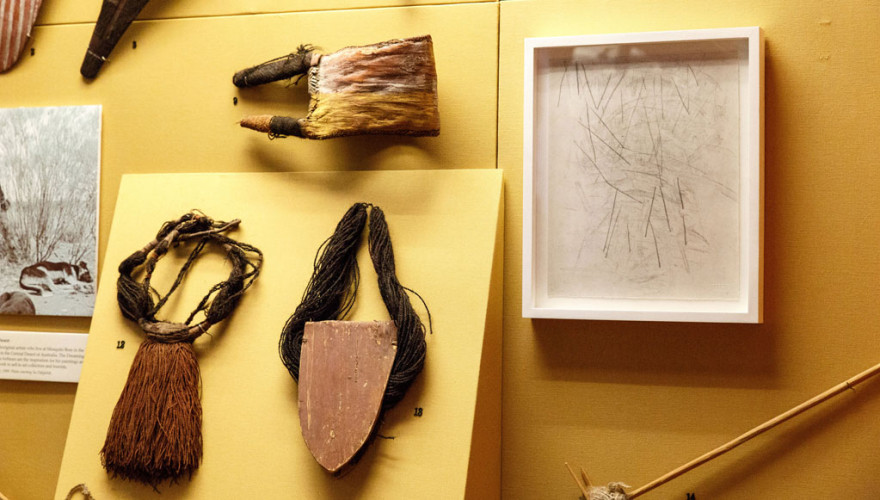APW in Cambridge, UK: Partnership with University of Cambridge Museum of Archaeology and Anthropology (UK)
Under the guidance of Australian Print Workshop, three Australian artists reinterpreted some of Britain’s most significant museum collections
Australian Print Workshop (APW) has long sought opportunities for Australian artists overseas, forging fruitful relationships with world-leading organisations including The British Museum in London. The collaboration with the University of Cambridge Museum of Archaeology and Anthropology proved to be the organisation’s most ambitious and successful international partnership.
A relationship with the Cambridge Museum of Archaeology and Anthropology (MAA) developed when they acquired a major collection of Indigenous prints from APW. For more than a hundred years, the MAA has housed antiquities and artefacts from around the world, including significant collections from Australia and the Pacific. Among some of their most prized collections is material collected on the three expeditions of Captain James Cook. Such a rich trove of Australian history hidden in the MAA vaults provided a great opportunity for cross-continental communication and discovery. The Antipodes project was born through several years of discussions between Professor Nicholas Thomas, Director of the MAA, and Anne Virgo OAM, Director of APW.
A ground-breaking collaboration
Antipodes was a project in three parts: the expedition, the expression and the exhibition. Three Australian artists - Brook Andrew, Tom Nicholson and Caroline Rothwell - were selected by APW to travel to Cambridge for an intensive research trip to meet with scholars and curators, and gain privileged ‘behind-the-scenes’ access to some of the most precious objects held not just at the MAA but at the entire network of Cambridge Museums: the Fitzwilliam Museum, Kettle's Yard, the Museum of Zoology, the Whipple Museum of the History of Science, the Sedgwick Museum of Earth Sciences, The Polar Museum and Cambridge University Botanic Garden and Herbarium. The group also spent time visiting curators and accessing important collections held at the National History Museum and The British Museum in London.
Following their UK trip, the artists worked with APW to produce a series of printworks based on their experiences in Cambridge.
The core of the project was to look at objects and cultural material relating to Australia and the Pacific. Each of the artists had extensive experience in working with archives and museum collections. Brook is renowned for his work with archival material that exposes and re-examines ways in which Indigenous peoples have been represented. Tom has a particular focus on the re-interpretation of colonial history and Caroline is interested in the history of science and botany.
A finch in the hand
The first phase of Antipodes was completed in March 2015, with the three artists and APW Director Anne Virgo and Senior Printer Martin King embedded in Cambridge for an intensive two week period. An arranged program of visits and appointments for the APW delegation to the various museums to meet with scholars and go ‘behind-the-scenes’ to look at some of the most valuable works in the collections, uncovered many treasures.
The group saw so many amazing objects including a thylacine skin, some of the plant materials that Charles Darwin had collected on the Beagle voyages and one of Charles Darwin’s finches (collected on the Beagle), objects that were reportedly the only fully documented objects that Captain Cook ‘collected’ in Botany Bay, Cook’s Voyage books – 1st editions purchased in the years they were published.
Beyond the delights of encountering such rare and significant objects, there was a deep mine of meaning to explore. At the core of the Antipodes project was a tension between the history, meaning and ownership of these objects and the ways that our region has been studied, collected and known through the lens of colonialism.
A season of three solo exhibitions at the Australian Print Workshop Gallery in 2016 exhibited the Antipodes suites created by the three artists in collaboration with APW printers. An exhibition at the University of Cambridge Museum of Archaeology and Anthropology followed in June-September 2016.
Antipodes was made possible through the generous support of APW's long-standing philanthropic partner The Collie Print Trust.
Australian Print Workshop is supported by Creative Victoria.
